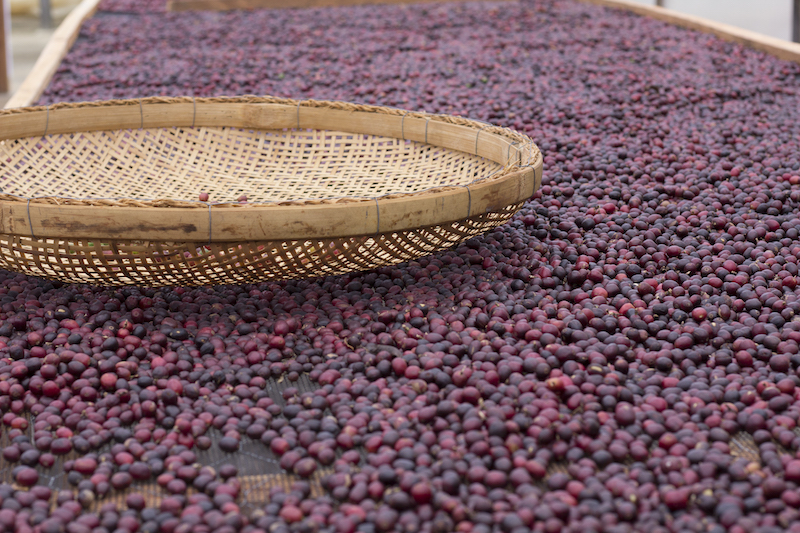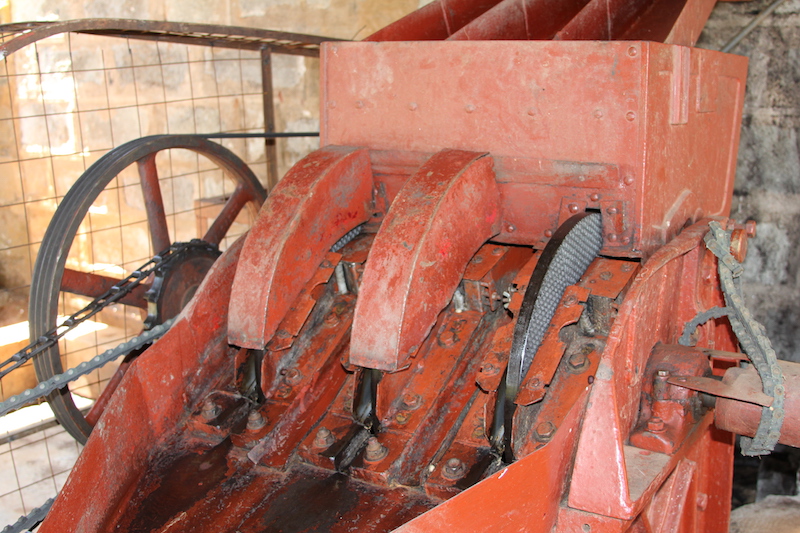The Basics of Coffee Processing
What happens after the fruit is picked and before it arrives in our roastery
We often talk about cultivar or region affecting the way a coffee tastes, but equally important is the way that a coffee is processed. Two techniques—natural (or dry) processing and washed (or wet) processing—turn ripe coffee cherry into green coffee that’s ready for export. Within the two techniques, endless variations give farmers or producer groups the opportunity for their artistry to shine.
Knowing what natural and washed mean will help you understand what you like best in our coffees, because the two methods influence flavor and mouthfeel in very different ways.
Natural Coffee: The Original Method
Of the two methods, natural processing is the older technique, whereby whole coffee cherry dry intact on raised beds, patios, or mats. Once the fruit is entirely dry, it’s either stored for a period of months or hulled right away to remove the outer skin and the inner parchment. All that remains are the two seeds—known more commonly as beans.
Natural processing originated in places without reliable access to water, like parts of Ethiopia and Yemen. The technique makes sense there, where temperatures are hot and the sun is powerful. In these conditions, the drying coffee cherry have little chance to mildew, as compared to places like Cobán, Guatemala, where perpetual mist falls throughout harvest season.
When processed well, natural coffees articulate fruited flavors rarely experienced in washed coffees. Notes of blueberry and strawberry might perfume a cup, so that even those new to coffee tasting are able to pinpoint the exact flavor. In a very real way, the beans absorb essences of the fruit’s drying flesh. That’s why natural coffees exhibit a wide range of vivid fruited and sometimes wine-like notes, along with greater body and less acidity.
Natural processing is not without risks. If the drying cherry are not frequently raked, the fruit can ferment or spoil, and the resulting coffee can taste sour or yeasty. When we source natural coffees—often from Ethiopia, but more recently from Uganda and Myanmar—we’re looking for clarity of flavors, whether they are fruited, tart, or boozey. For naturals used in our blends, we go after syrupy and jammy coffees that have a fruit-forward lingering finish. Natural coffees are exciting, because they have the potential to show off a region’s terroir in a unique way—a result of the coffee beans' prolonged contact with the original fruit.
Washed Coffee: The More Consistent Method
Most of the coffee that most anyone drinks is washed coffee, or coffee that’s been wet processed. It’s the more reliable of the two methods, producing coffee with higher acidity, which is just another way of saying brightness. (You may not identify with the word “acidity,” but it’s a quality that producers and roasters alike are after in the most standard of cups.)
The basic method begins with sending the just-picked coffee cherry through a pulping machine, which removes the outer skin while leaving the pulp (also called mucilage) clinging to the seeds inside. The pulp-covered seeds are then soaked in water and periodically agitated to encourage the pulp to fall off. Fermentation follows, where the seeds sit in water for anywhere between a few hours to a couple of days, depending on the climate, equipment used, and the producer’s preference.
Following fermentation, the beans are rinsed thoroughly and then dried, either outdoors on raised beds, or in a mechanical dryer. Climate and equipment dictate how many days this final step takes.
Room for Interpretation: Honey Process and Wet Hulling
A few coffee-producing countries have idiosyncratic processing methods that have come to define the country’s coffee profiles. Kenya, for example, ferments the coffee beans for a longer time, which are then cleaned by a post-ferment soak. This method directly contributes to the acidity that’s the hallmark of the country’s best coffees.
Brazil is known for pulped natural processing, which falls somewhere between wet and dry processing. The coffee cherry’s skin is removed, as in wet processing, but instead of soaking the cherry, they’re spread out to dry with the pulp still attached to the beans. The result is a coffee with body and low acidity, like a natural, but without the telltale vivid fruits. This process also goes by the name honey, and producers, particularly in specialty coffee, like to play with the amount of fruit pulp they leave on in an effort to move the gauge toward or away from natural or washed characteristics.
Sumatra has an entirely unique method, giling basah, or wet hulling, which contributes to the earthiness, body, and low acidity for which the country’s coffee is known. Similar to pulped natural processing, the skin is removed and the beans, with clinging pulp, dry. But, the drying period lasts for a day or two at best. The parchment is then removed when the moisture levels are incredibly high. The beans, which are quite delicate in this state, are laid out to dry again, either at the processors, or along the way to export. Coffee processed in this way absorbs qualities of the earth or asphalt upon which it dries—odd, but it's partly what makes Sumatra’s profiles in a class of their own.
A Matter of Preference
We carry both natural and washed coffees because we find the range of flavors thrilling. For some, their first sip of a natural can be eye-opening. For others, it violates their very idea of what coffee should be. We tend to believe that coffee isn’t any one thing; it’s a fruit that needs manipulation in order to become the drink we love. Farmers and processors around the world have adopted the methods that make the most sense for their climate, access to water, and cultural traditions.





